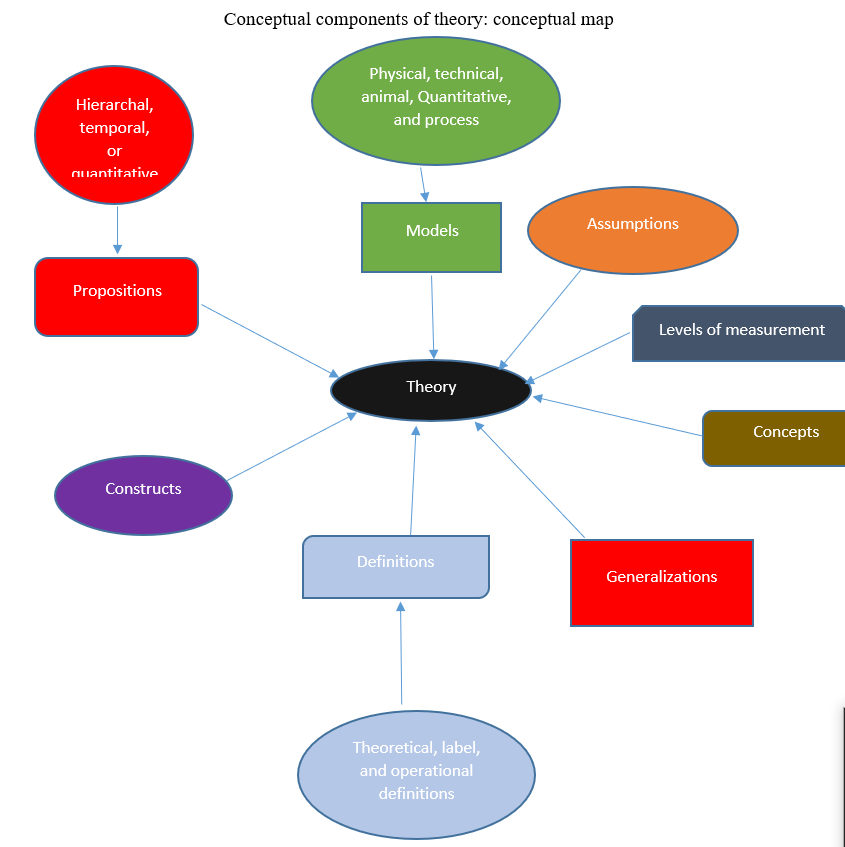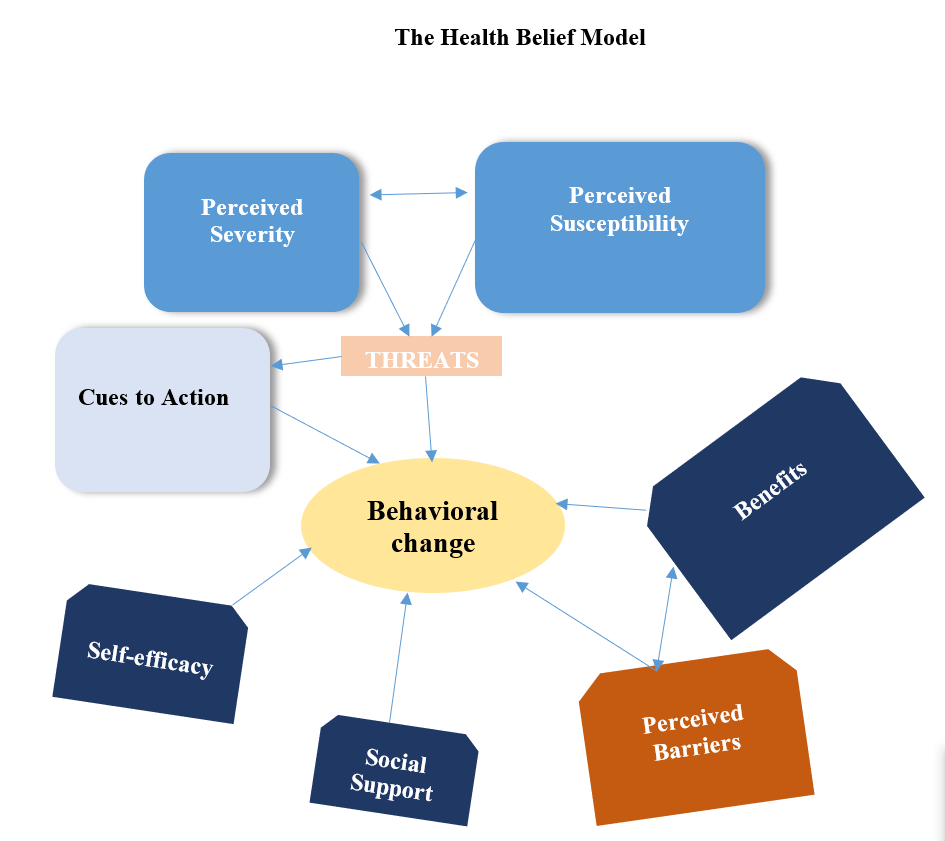Concept Map for Nursing: How to Make a Nursing Concept Map
Page Contents
Concept maps are an efficient approach for visually organizing and portraying a subject’s understanding and details. Your nursing assignment is to build and publish a concept map for each portion of the course on your chalkboard blog site. The concept map summarizes content discussed throughout the first two weeks of class, including an introduction to the chemical principles covered in chapters 1-6 and concepts introduced as part of green chemistry and life cycle thinking. It is critical that instructors spend time acclimating younger students to charts and diagrams before implementing this method.
A better understanding of the relationships between fundamental and clinical sciences can aid in the vertical integration of medical programs. Concept mapping may be an effective technique for this elucidation. Little is learned about tutors’ capability concerning the articulation of integration. As such, we examine the elements that influence the knowledge of groups of clinicians and standard researchers with varying degrees of competency who learn to communicate the combination of medical and standard sciences through concept maps.

Nursing Concept Map Examples
Need help with the Nursing Concept Map above? Feel Free to Check With Our nursing experts.
Concept Mapping Theory
Following the definition of idea maps, we shall discuss their historical history and theoretical foundations in corrections outside of medical education. With this structure in place and in light of the results of the scoping study, the primary focus of this brief essay will shift to the application of idea mapping in medical education. To highlight the mobility and extensive use of idea maps, we have chosen teaching methodologies and sample maps for contemporary problems in medical education.
We modified Novak’s ‘hierarchical’ method of notion mapping. 6 To create a map, a resident connects a series of principles (described as a perceived regularity in objects or events indicated by a label) using arrow lines and a statement (proposition) created above the line expressing how the ideas are related (referred to as a concept-link). The concept seizure connected to non-focal by the statement ‘may be classified as’ is an example of a concept link in the pre-instructional map displayed in Fig. 1. The map hierarchy is shown by the arrow directions in the concept link and the map’s layout of ideas, with more fundamental principles at the top and more specific concepts below or spreading outside.
Porphyry of Tyre advocated for their use as a visual representation of understanding in the third century; Carl Linnaeus used them as the basis for his taxonomy of animals and plants in the 18th century. They were first studied as a knowing tool in the 1970s at Cornell University by Joseph Novak, who based his research on David Ausubel’s learning theories. Since the inception of software programs to facilitate the creation and sharing of idea maps, several applications have included the capability for multiple users to collaborate on the same concept map.
Background: In education, concept maps are frequently used to foster meaningful knowledge, critical thinking, and analytical ability. Such maps are particularly relevant in medical education because idea mapping is a form of active knowing that can foster the lifelong learning necessary for medical students to manage an ever-growing amount of knowledge.
Concerns: Despite these benefits, the introduction of idea maps into syllabuses is sometimes met with skepticism and opposition. To overcome this barrier, delivering differing degrees of support, i.e., scaffolded versus self-constructed idea maps, may be more appropriate for novice and experienced students, respectively. Additionally, quick feedback (as a means of enhancing student learning and motivation) is time-consuming and difficult to deliver.
Most concept maps depict concepts as circles or boxes (sometimes called nodes), which are organized hierarchically and connected via lines or arrows (also called arcs). These lines have been tagged with connecting words and phrases to assist in explaining the relationships between concepts. At this point, the reader may wonder how a typical conventional science idea map looks. The map in Figure 1 summarizes the major components of the idea of inflammation. Remember that the map presents information in a basic hierarchical structure, illustrates it with examples, and contains vertical and horizontal linkages.
Although the development of concept maps and their use in mentor and research spans more than three decades, this effective educational tool has just recently begun to be integrated into medical education. Concept maps are critical in resolving such requirements, and their usage in medical education can be quite beneficial. In today’s diverse and challenging environment of medical education, trainers must become familiar with the theoretical underpinnings of concept maps, as well as their potential applications in medical education, inherent benefits, and challenges associated with their implementation in the medical curriculum, with the goal of improving trainees’ learning and assessment. Concept mapping is a powerful learning technique that enables you to create a visual representation of complex material. These visual representations of conceptual frameworks comprise major concepts, notions, and terminology. In contrast to notes and descriptions, which are often organized in a linear fashion, concept maps describe complicated links between concepts using an associative rather than a linear approach.
What Is Information in A Concept Map for Nursing?
Concept maps assist you in synthesizing your understanding of a subject and integrating concepts. Since they incorporate both visual and linguistic representations, idea maps aid learners in absorbing and retaining new knowledge. Concept maps, often called mind maps, are visual aids for organizing and displaying knowledge. They enable trainees and instructors to represent and organize their understanding of a subject by creating a map in which concepts, typically encased in circles or boxes of some kind, represent ideas or realities and lines or arrows connecting principles represent relationships. Users can create, view, share, and evaluate concept map-based knowledge models.
Concept Mapping Software
While idea mapping can be accomplished using pen and paper or other non-electronic means, several software applications can be used to generate a variety of concept maps with varying degrees of information. Specialized concept mapping software has been developed along with typical word processing tools such as Microsoft Word, Microsoft PowerPoint, Corel WordPerfect, and Corel Draw. The IHMC, a consortium of Florida institutions, has developed Cmap Tools, a feature-rich concept map creator that is completely free to use. Additionally, this software contains a search capability that enables users to browse a variety of public Cmap databases in search of sample concept maps.
Axon Idea Processor, 3D Topicscape, Inspiration, MindGenious, MindMapper, MindView, Semantica, SmartDraw, Spinscape, and Tinderbox are additional software applications designed specifically for concept map creation. Several of these software packages are available for free download in various programming formats and languages.
How To Do a Concept Map for Nursing?
In nursing education, concept mapping is applied at different levels. By incorporating concept mapping into nursing undergraduate education, educators can help students develop and modify their critical thinking skills by developing ideas, encouraging nonlinear relationships between patient data and complex disease processes, and compelling students to visualize the application of nursing theory to nursing practice.
The most often used concept mapping application in nursing is to illustrate the nursing process during care planning. Each nursing process component (assessment, diagnosis, planning, intervention, and evaluation) can be presented in relation to a disease process, or patient problems can be recognized and relationships formed between them to create a wider understanding of patient care.
A primary thought is formed from the main stem, and this notion is then expanded to include the numerous key ideas in the paragraph. The instrument that is most commonly used to arrange ideas by promoting knowledge must be prepared in a few steps. To elaborate, the primary phases would be as follows:
Selecting a suitable illustration platform– Individuals must choose a platform for concept mapping based on accessibility and personal preference. Among the several drawing platforms accessible are the following:
- The basic instrument—a pen and paper
- Software that is accessible online (personal)
- Online cloud-based software
Although some prefer traditional methods, the online tool has several advantages and is quite simple.
Decide on the main stem.
The main stem refers to the key idea, theme, or subject selected for inclusion in the concept map formulation. This is critical to correctly identify the many keys that would aid in the generation of ideas as one descends the hierarchical structure. The primary stem can be as broad as a desired field of study or as specific as a standard assignment question. All ideas written below it in the form of keys must serve as a reminder to return to the main stem. If you are able to accomplish this, you are on the correct route.
Key Concepts
Following the selection of the primary subject or central idea, key concepts are developed. The central idea refers to the primary task for which the concept map was created. It could be a person, a place, a time period, a research topic, or simply a word. Consequently, you might refer to them as the dimensions that are directly tied to the central concept. During this phase, the brain is flooded with creative ideas.
Choose the appropriate form for the appropriate notion.
A concept map contains numerous concepts. There is a central concept; there are connecting words, both keys, and specialized thoughts. Placing them all beneath a square will subsequently confuse you as to which was a central concept and which was more particular. To avoid such problems, a specific box is chosen, and a line is drawn for a certain type of concept. When conducting business online, another option is to use the color of the box to indicate the kind of concept or information.
Recheck for precision – Because ideas are added depending on the planned use of boxes and colors, it is critical to double-check the fresh ideas, keywords, and linking words to avoid making errors.
Other Tools similar to Concept Mapping:
- Mindmap
- Bubbl
- Schrockguide
- Simplemind Free (Mac)
- yEd
- Freemind
- VUE
- CMap
Benefits Of Concept Mapping in Nursing Education
Concept maps have several advantages over conventional instructional and evaluation methods. Concept maps can offer nursing students a “big picture” view of a subject, helping them to progress beyond memorization or rote learning to conceptual understanding. This provides the nursing student with the foundations for critical thinking. Additionally, concept maps are simple to create.
Additionally, concept maps can be used as an instructional approach for educators or as a learning exercise for students. The learner can acquire the desired knowledge, performance, and behaviors defined in the curriculum through learning activities.
When establishing continuing education opportunities for current nursing staff, idea mapping can assist in visualizing new knowledge, as many staff prefers visual or kinesthetic learning.
When students require a platform to alleviate pre-test anxiety caused by a lack of certainty about whether critical aspects of a clinical lesson were studied, the use of concepts maps can assist students in organizing data, determining interrelations between patient data and disease processes, and providing the nursing student with an overall picture of the care provided to their patient.
Disadvantages Of Concept Mapping in Nursing Education
While concept mapping offers numerous advantages, it does have some drawbacks. Due to the breadth of viable concept map designs, educators may need to spend additional time evaluating students who employ various construction strategies. Grading the different concept maps may also be challenging unless the educator employs stringent grading standards, such as a clear assignment rubric. The use of concept mapping may also involve a paradigm change for learners accustomed to learning solely by memorization. This might occasionally create difficulties when the nursing student adjusts to the new way of learning.
Conclusion
Concept maps are a collaborative learning technique developed to capitalize on the distinction between rote and meaningful learning. Concept maps could be utilized in all facets of undergraduate and graduate nursing education and enhance teaching across all academic areas. By analyzing clinical data, learners can begin to build their critical thinking abilities and plan comprehensive care for their patients. As learners understand disease processes, they may comprehend the direct effect of interventions on patient care. Educators can use concept mapping as a teaching and evaluation approach.
Preparation for Developing a Nursing Concept Map
The steps on how to make a nursing concept map include:
- Decide on the essential concepts about the process or the problem
- Sort these concepts in ascending order by beginning with the most descriptive and broadest concept and working your way down to the most detailed concept.
- Establish a connection between concepts through links, utilizing notations to describe their relationship with one another and provide meaning to the connection.
- Provide examples, ranging from social to personal to professional, to help understand the topic or relationship between concepts.
Nursing Concept Map Examples

Nursing Concept Map Examples
Hire a Professional Concept Map Essay Writer
Do you require some one-on-one guidance on how to develop a concept map? Find a professional writer to help you deliver a plagiarism-free paper you can be proud of.
Having a writer expert to help you learn is the best way when you are new or starting to write an assignment from scratch. Your grades are important, and if you are not sure you can write a compelling essay and concept map, then you need to engage professionals by engaging “buy nursing papers” service and obtain the help you require.
Our company is fully committed to giving you the best writing service ASAP. It also presents you with the only way to avoid plagiarism in your nursing concept map assignment.
You can quickly get their help by placing an order.






